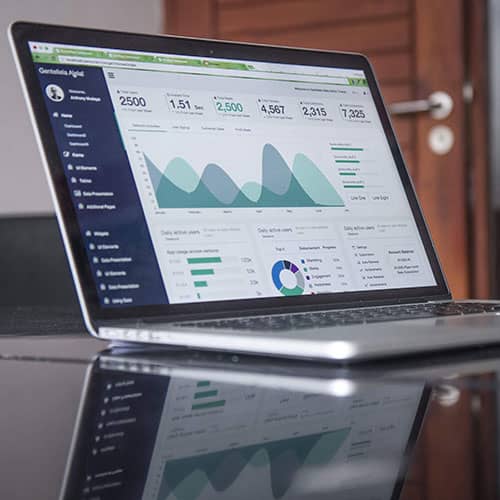The industrial equipment sector is at a transformative crossroads, with new technologies and methodologies reshaping how machines are designed, manufactured, and maintained. As we look toward 2025, the evolution of industrial equipment design is being driven by advancements in automation, artificial intelligence (AI), additive manufacturing (3D printing), sustainability, and data analytics. These trends are not just improving the efficiency of equipment, but are also enhancing safety, reducing downtime, and lowering costs for manufacturers.
In this blog, we’ll explore the key trends in industrial equipment design to watch in 2025, discussing how these innovations will shape the future of machinery and change the way industries operate.
The Rise of Smart Industrial Equipment
One of the most significant trends shaping the future of industrial equipment design is the growing intelligence of machines. As the industry embraces Industry 4.0 principles, smart industrial equipment is becoming the norm, integrating Internet of Things (IoT) sensors and real-time data monitoring capabilities.
- Sensors and Connectivity: In 2025, more machines will be designed with integrated IoT sensors that collect and transmit data continuously, allowing operators to monitor performance in real time. This connectivity enables predictive maintenance, which significantly reduces unplanned downtime by flagging potential issues before they become serious problems.
- AI and Machine Learning: The incorporation of AI and machine learning into industrial equipment design will allow machines to “learn” from their operational environments. Over time, these systems will optimize their performance based on historical data, adapting to new conditions without requiring manual adjustments. This will increase efficiency, reduce waste, and enhance equipment longevity.
Customization and Modular Designs
Another key trend in the industrial equipment sector is the growing demand for customized solutions. Every industry—from automotive to aerospace to energy—has unique requirements, and off-the-shelf equipment often needs modifications to meet specific needs.
- Modular Design: Manufacturers are increasingly adopting modular design approaches, which allow equipment to be customized with interchangeable components. This flexibility gives operators the ability to tailor machinery to the specific needs of their operations without overhauling entire systems. By designing industrial equipment in a way that components can be easily swapped, manufacturers can ensure better adaptability and future-proofing as technologies evolve.
- Personalized Solutions: Customization is no longer just about adjusting equipment to size or power specs; it's also about creating machines that can evolve with the user's needs. In 2025, expect to see more equipment designed with flexible configurations, capable of accommodating a broader range of functions within a single system, improving efficiency and versatility.
Sustainability and Eco-Friendly Design
As environmental regulations continue to tighten and industries face mounting pressure to reduce their environmental footprint, sustainability will be a driving factor in industrial equipment design in 2025. Equipment manufacturers are focusing on creating machines that are not only energy-efficient but also environmentally friendly in terms of materials used, emissions, and end-of-life disposal.
- Energy Efficiency: Future industrial machines will be increasingly designed for low energy consumption, optimizing motors, hydraulics, and other systems to reduce the energy load. Energy-efficient machinery will be key in lowering operating costs and contributing to a company’s sustainability goals.
- Recyclable Materials and Green Manufacturing: Industrial designers are looking to use sustainable materials that are recyclable or biodegradable. There will be an increased focus on designing machines with modular parts that can be disassembled and recycled at the end of their lifespan, reducing waste and making the equipment lifecycle more sustainable.
- Low-Emission Machinery: To meet global environmental goals, equipment manufacturers are focusing on low-emission designs. Whether through cleaner fuel technologies or by incorporating electric drives, the goal will be to develop machinery that meets increasingly strict emission standards without compromising performance.
Additive Manufacturing (3D Printing) for Prototyping and Production
The use of additive manufacturing or 3D printing is quickly becoming a game-changer in industrial equipment design. In 2025, 3D printing will be used extensively not only for prototyping but also for the production of custom parts and components, revolutionizing traditional manufacturing processes.
- Prototyping: Additive manufacturing enables rapid prototyping of industrial equipment. Designers can now test, iterate, and improve designs quickly and at a fraction of the cost compared to traditional methods. This also reduces the time-to-market for new industrial machines.
- Spare Parts and Custom Components: 3D printing will allow manufacturers to produce spare parts on demand and create custom components more efficiently. By printing parts with specific material properties, companies can ensure that their machines operate at peak performance without the need for long lead times and expensive inventory management.
- Cost Efficiency: One of the main advantages of using 3D printing is its cost-effectiveness for small production runs. Instead of producing large quantities of parts that may never be used, manufacturers can print only what is needed, reducing waste and improving overall production efficiency.
Enhanced Human-Machine Interaction
As industrial machines become more intelligent and autonomous, improving human-machine interaction (HMI) is becoming a focal point in design. In 2025, expect to see significant advancements in how operators interact with machines.
- Augmented Reality (AR) and Virtual Reality (VR): The integration of AR and VR in industrial equipment design will help operators interact with machines in a more intuitive and efficient manner. Using smart glasses or headsets, operators can access real-time data, machine diagnostics, and instructions without needing to leave their workstations.
- Touchscreen and Voice-Controlled Interfaces: The future of HMI will also include more touchscreen interfaces and voice-controlled systems, allowing operators to manage machines and make adjustments on the fly, improving productivity and reducing errors.
- Advanced Monitoring Systems: More sophisticated visual and auditory indicators will alert operators about potential issues in real time, enabling faster decision-making and reducing the need for constant manual supervision.
Designing the Future of Industrial Equipment
The future of industrial equipment design is focused on intelligence, customization, and sustainability. By 2025, new technologies such as smart machinery, modular designs, 3D printing, and augmented reality will reshape how industrial equipment is produced and operated. However, the complexity of these advancements requires an integrated approach to managing data, production schedules, inventory, and customer requirements—an approach that ERP systems will provide.
By seamlessly integrating all aspects of manufacturing—from design to delivery—ERP will be key to optimizing the production lifecycle and ensuring that industrial equipment meets the demands of tomorrow. As manufacturers innovate with new designs and technologies, ERP will remain the backbone that keeps everything running smoothly and efficiently.
If you have any questions about how ERP systems can support your machinery design, production, and operations, simply fill out the form below to schedule a free consultation.
About The Author
Yatin Jain is a Principal Consultant at Jivaso, bringing over 15 years of expertise in process optimization and digital transformation for businesses across Canada and USA. As a technology evangelist, Yatin is driven by the mission to democratize access to advanced tools once reserved for large enterprises, empowering small-medium businesses to thrive. He is an avid writer on strategies to streamline operations, boost productivity, and accelerate growth for small-medium businesses and startups. Yatin is also dedicated to mentoring young entrepreneurs, offering guidance on product development, community building, strategic partnerships, marketing, and securing funding.



